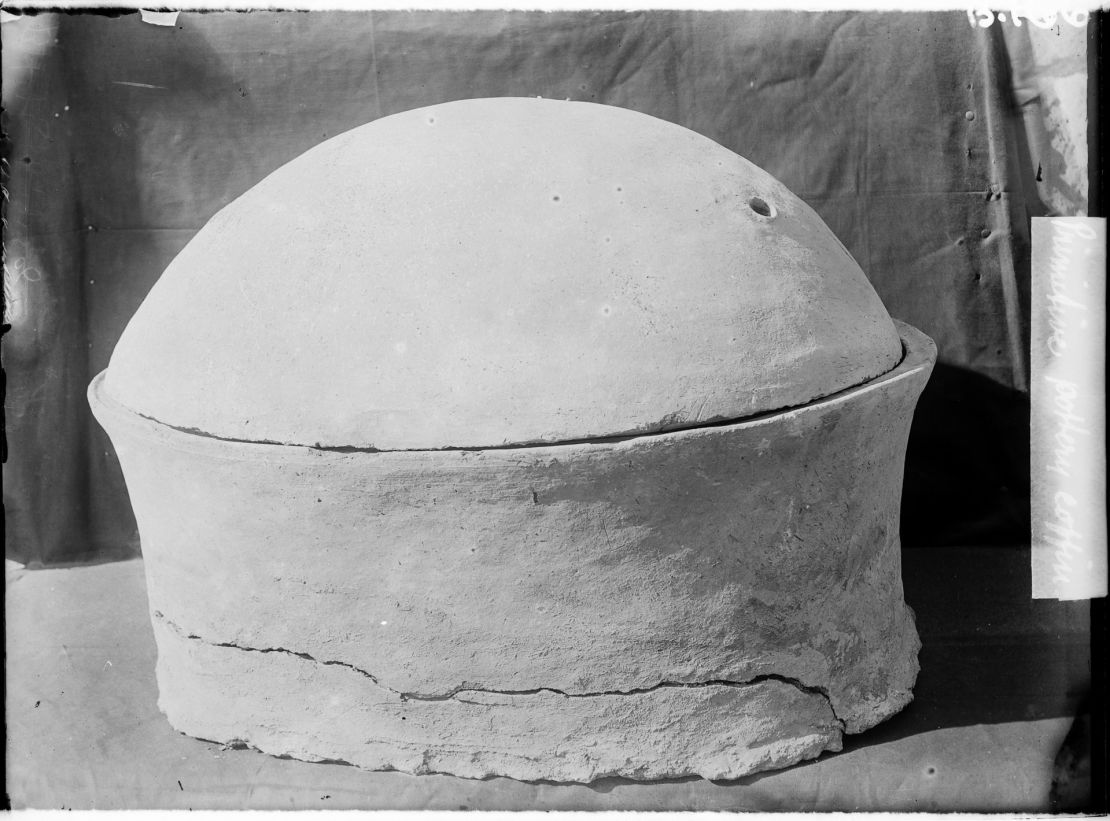CNN
—
In a long-sought first, researchers have sequenced the complete genome of an historic Egyptian particular person, revealing unprecedented perception concerning the ancestry of a person who lived in the course of the time when the primary pyramids have been constructed.
The person, whose stays have been discovered buried in a sealed clay pot in Nuwayrat, a village south of Cairo, lived someday between 4,500 and 4,800 years in the past, which makes his DNA the oldest historic Egyptian pattern but extracted. The researchers concluded that 80% of his genetic materials got here from historic individuals in North Africa whereas 20% traced again to individuals in West Asia and the Mesopotamia area.
Their findings, printed Wednesday within the journal Nature, provide new clues to recommend there have been historic cultural connections between historic Egypt and societies throughout the Fertile Crescent, an space that features modern-day Iraq (as soon as often known as Mesopotamia), Iran and Jordan. Whereas scientists have suspected these connections, prior to now the one proof for them was archaeological, somewhat than genetic.
The scientists additionally studied the person’s skeleton to find out extra about his identification and located intensive proof of onerous labor over the course of an extended life.
“Piecing collectively all of the clues from this particular person’s DNA, bones and enamel have allowed us to construct a complete image,” mentioned lead examine writer Dr. Adeline Morez Jacobs, visiting analysis fellow at England’s Liverpool John Moores College, in an announcement. “We hope that future DNA samples from historic Egypt can develop on when exactly this motion from West Asia began.”
Pottery and different artifacts have instructed that Egyptians could have traded items and data throughout neighboring areas, however genetic proof of simply how carefully completely different historic civilizations mingled has been more durable to pin down as a result of circumstances comparable to warmth and humidity rapidly degrade DNA, in keeping with the examine authors. This man’s stays, nonetheless, have been unusually well-preserved of their burial container, and the scientists have been in a position to extract DNA from one of many skeleton’s enamel.
Whereas the findings solely seize the genetic background of 1 particular person, specialists mentioned further work may assist reply an everlasting query concerning the ancestry of the primary Egyptians who lived firstly of the longest-lasting identified civilization.

Support Greater and Subscribe to view content
This is premium stuff. Subscribe to read the entire article.














